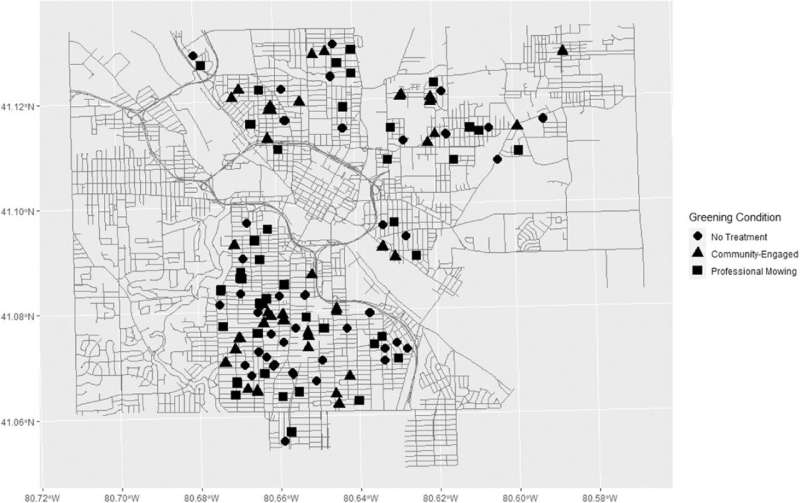Vacant lot greening can reduce community crime and violence

Communities that are engaged in cleaning, mowing and repurposing vacant spaces are likely to experience greater reductions in violence and crime than neighborhoods that do not participate in these activities, according to new research led by the University of Michigan.
These findings, based on a three-year study conducted by researchers at the U-M Institute for Firearm Injury Prevention and the Michigan Youth Violence Prevention Center in Youngstown, Ohio, were published this month in the American Journal of Community Psychology. With support from the Centers for Disease Control and Prevention, researchers studied Busy Streets Theory and the greening hypothesis, which suggest that engaging community residents in cleaning up and repurposing vacant lots can reduce crime and violence.
"Our results suggest that when local organizations and institutions collaborate with residents on community improvement, those efforts can help create safer neighborhoods," said Laney Rupp, manager of the Michigan Youth Violence Prevention Center at U-M's School of Public Health.
Researchers partnered with Youngstown Neighborhood Development Corp. and utilized data from 2,100 street segments to test the effects of community-engaged vacant lot greening. Findings revealed that street segments around vacant lots cared for by community residents experienced more than twice the reduction in violent crime than those receiving professional maintenance, whereas areas receiving no care saw a slight increase in violent crime. These findings were the same when looking at crime involving only youth victims.
A related study, conducted in 2018 in Flint, Mich. by U-M School of Public Health researchers, showed that efforts to maintain vacant lots in the city reduced assaults and violent crime by 40 percent. In both studies, researchers highlight the need to ensure formal community partnerships between residents and other stakeholders, such as land banks, to financially support residents' work and to avoid burdening vulnerable communities.
"Greening interventions driven by community residents can be readily scalable to cover large areas, affect population-level change for improving community health, and prevent violence over time," said Marc Zimmerman, the Marshall H. Becker Collegiate Professor of Public Health and co-director of the Institute for Firearm Injury Prevention
"Based on our research, we have found that resident engagement is vital to the sustainability of greening as it is associated with enhanced acceptability of programs, long-term community buy-in and safer streets."
More information: Catherine H. Gong et al, Community engagement, greening, and violent crime: A test of the greening hypothesis and Busy Streets, American Journal of Community Psychology (2022). DOI: 10.1002/ajcp.12622
Justin E. Heinze et al, Busy Streets Theory: The Effects of Community‐engaged Greening on Violence, American Journal of Community Psychology (2018). DOI: 10.1002/ajcp.12270


















